Whether your a first time parent or not, it’s easy to worry when rashes seem to appear on your child. These often pop up on babies and it’s difficult to know whether it’s just a tomato sauce stain — or something you need to flag with the GP.
I’m not ashamed to say when my toddler breaks out in a rash, especially when she was younger, I always Google and contemplate whether I need to see a doctor, even if my child seem to be fine otherwise.
So, if you find yourself panicking over a bit of redness, here’s what you need to look out for.
Paediatric doctor Dr Rachael Barr who is also known @thekidsdoctor_ online has shared a list of rashes that are quite common, that you don’t need to worry about and don’t usually require any treatment.
Common rashes that don’t require you to see a doctor
Milia
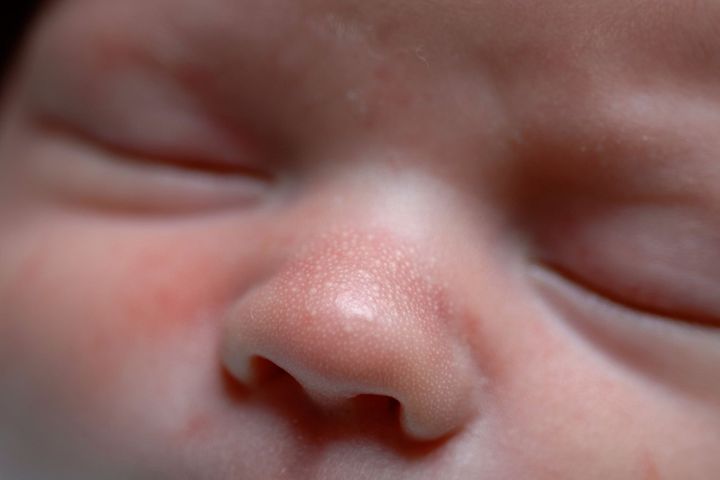
Dr Barr explains that these are tiny 1-2mm spots that are usually white or yellow in colour. They appear on babies face in the first days of life and are usually gone by 4 weeks old.
“They don’t need any treatment and are harmless. About half of all babies will develop these,” she says.
You can find out more about these rashes on the NHS website.
Erythema Toxicum Neonatorum
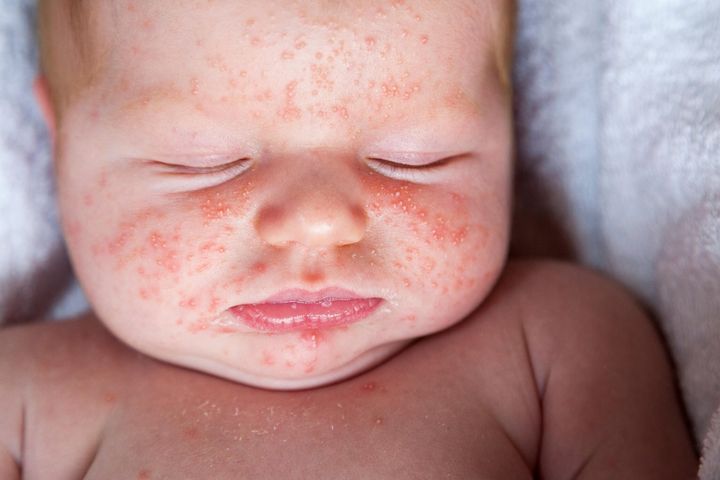
Though this has a long name and can look frightening in your newborn, it is actually very common and is nothing to worry about, explains Dr Barr.
These are blotchy flat red patches with white or yellow little bumps within the patches. They can be scattered all over a babies face and body.
“It appears and then disappears all within the first few days usually. Health visitors, midwives and paediatricians should all be very used to seeing this rash so if you’re worried get someone to glance at it for reassurance!”, she adds.
Baby Acne
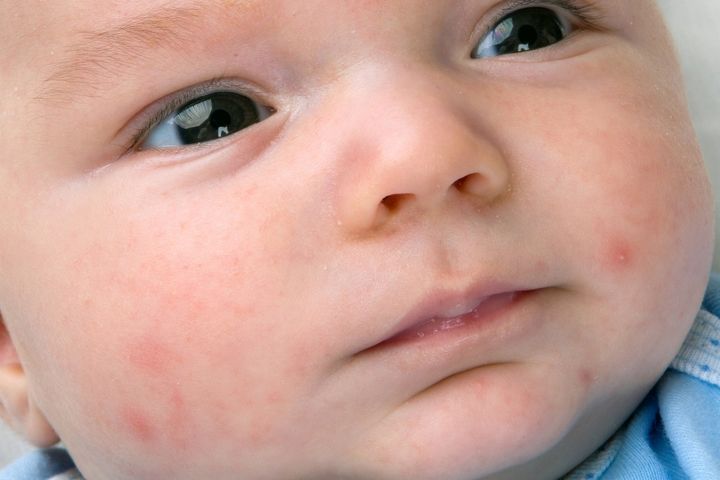
This rash usually appears at about 2-4 weeks old and again clears up on its own with no treatment by around 3-4 months, says Dr Barr.
These look like red or white bumps on babies cheeks, nose and forehead. Unlike it’s teenage counterpart - it doesn’t usually leave any scarring. Avoid scrubbing or squeezing the lesions and see your GP if its not clearing up!
Heat Rash/Prickly Heat
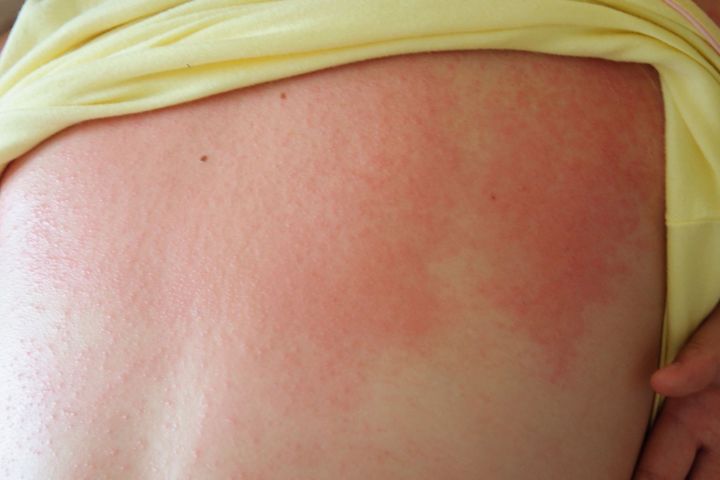
Dr Barr says that heat rashes usually appear as red small raised spots and can be anywhere on the body. They’re usually a bit itchy and often irritated by getting very sweaty or hot.
“It will usually settle on it’s own over the course of a few hours or days. You can help by keeping your little one in cool lightweight clothing and keeping them hydrated with plenty of fluids,” she advises.
Rashes that require you to see a doctor
Eczema
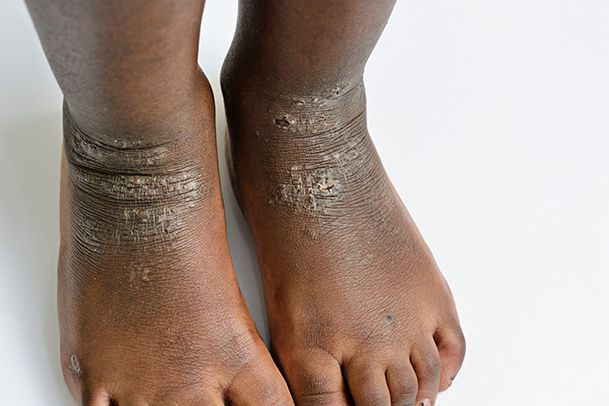
This usually appears in the first few months of life but can look different in different age groups. In babies it classically affects the face and scalp most, whereas in older children it more typically affects the ‘flexures’ i.e. the inside of the elbows and the back of the knees, says Dr Barr.
“It causes skin to become dry, cracked, itchy and sore. The exact cause isn’t known but you may notice certain ‘triggers’ in your child e.g. particular food, detergents, soaps or weather changes. Eczema is a dry skin condition so you should start by using regular emollients (moisturisers), but if this isn’t keeping it well under control then see your GP for further advice.”
Slapped Cheek
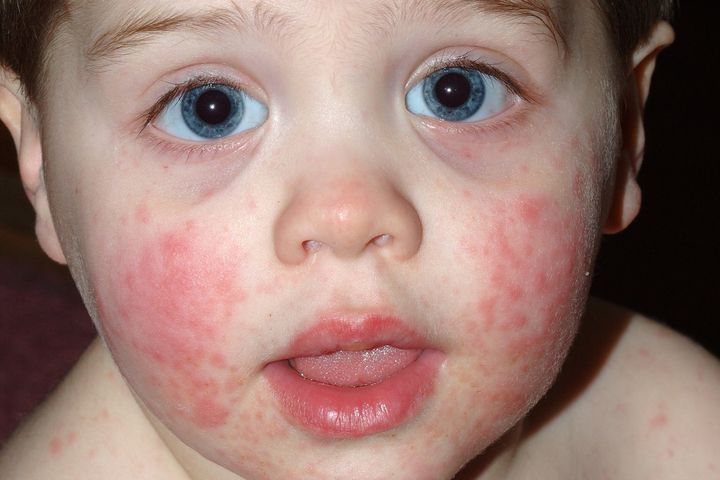
This is caused by an infection with a virus called Parvovirus B19. This is a really common infection in childhood and usually gets better on it’s own but it’s important to recognise it if you can for several reasons, explains Dr Barr.
She says it can cause complications in pregnant women, but also in people with weakened immune systems or blood conditions like Sickle cell or thalassaemia.
“If you think you have slapped cheek and have any of these conditions or are pregnant then you should see your doctor.
“It starts with a fever, runny nose, sore throat, headache and sometimes some joint pain. After a few days you then get a characteristic red rash on one or both cheeks. It can be less easy to spot in darker skin tones.
“A few days later you may get a spotty red rash over the rest of the body and limbs which can be itchy. If your child is otherwise fit and well it can usually be managed at home by keeping hydrated and paracetamol or ibuprofen for comfort,” says Dr Barr.
Hand, Foot and Mouth

This is an infection most commonly caused by Coxsackievirus. It typically starts with a high temperature, sore throat and being off their food. A few days later children may develop the classic rash which consists of mouth ulcers both in and around the mouth, and spots on the hands and feet, according to Dr Barr.
“They can start as little red spots but develop into blisters that might have a grey tinge to them. HFAM can also often affect the nappy area. This typically gets better on it’s own in 7-10 days, but try to keep your child hydrated and use paracetamol/ibuprofen for comfort.
“You should see a doctor if you can’t get your child to drink at least 50% of their normal fluids, they have less than 2 wet nappies in a day or if the lesions are very widespread over the top of eczema,” she adds.
Chickenpox
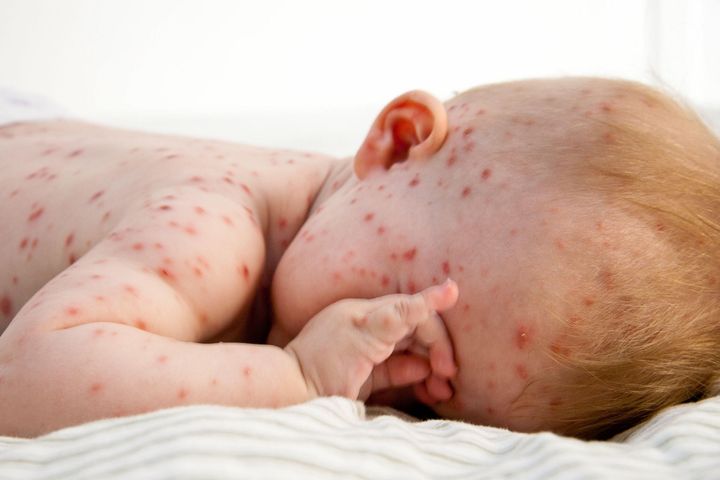
Chickenpox usually affects children but can be more serious if it’s caught in adulthood. There is a very good vaccine against chickenpox but unfortunately, it’s not yet included in the routine schedule, so you have to pay privately for it through a pharmacy says Dr Barr.
“The rash typically happens in 3 stages. Little red/pink/dark spots appear anywhere on the body including inside the mouth and around the genitals. These will then become very itchy fluid filled blisters. Eventually these will scab and crust over before healing. They can leave scars.”
Chickenpox often gets better on its own at home by keeping hydrated and using paracetamol for comfort, you should try to avoid using Ibuprofen, advises Dr Barr.
She says you should seek help if:
- You’re pregnant and either have chickenpox or haven’t had it before and you’ve been exposed to someone with it.
- The skin around the blisters is hot, painful and red
- Your child is dehydrated (Not having at least 2 wet nappies/wee’s in a day)
- Your child seems unwell in themselves (drowsy, difficult to wake, confused)
- Your baby under 4 weeks old has chickenpox or has been exposed to chickenpox
- Your child has a weakened immune system and either has chickenpox or has been exposed to it.
Measles

Measles is often thought of as a thing of the past because we’ve had an effective vaccine against it for a long time (MMR). However Dr Barr has added it in here as there has been a recent large outbreak of measles in the UK particularly in the Midlands and around London.
She believes it’s important to recognise the symptoms.
“Children aren’t vaccinated in the UK until their 12 months immunisations so your little one may be unprotected. It typically starts with high temperatures, snotty nose, cough and red watery eyes.
“A few days later the rash develops which typically starts behind the ears/on the face and then spreads down over the body. You should notify your GP if you think your child may have measles, it’s best to speak to them over the phone first as measles is highly infectious so they may have to plan a time so you aren’t waiting in a waiting room with other people,” she explains.
Measles can have a number of serious complications and Dr Barr recommends discussing with a health professional if you think you have measles even if your child is currently well so they can discuss all the signs to watch for.
Viral Urticaria and Hives

Hives are red raised itchy rashes that may have paler skin in the middle of the raised patches. There are so many causes of hives in children including food allergies, insect bites/stings, contact with allergens like latex and reactions to drugs, says Dr Barr.
“They can also commonly develop in children in response to a viral infection. You can chat to a pharmacist about anti-histamines which can be helpful at improving the rash and settling down the itch. If it’s in response to a virus it will usually settle on it’s own over a few days, however if it’s recurring then it’s probably a reaction to something your child is coming across so you should see your doctor. ”
Occasionally hives can happen as part of a life threatening allergic reaction called anaphylaxis, you should call 999 if your child develops any of the following:
- Difficulty breathing
- Swelling of tongue/lips/mouth
- Loud harsh noise when your child is breathing in – called stridor
- Wheezing
- They feel faint/dizzy or look pale/clammy
- They are confused or agitated
Of course this list does not cover every single type of rash, so it’s best to check with your GP if you spot something you’re worried about!